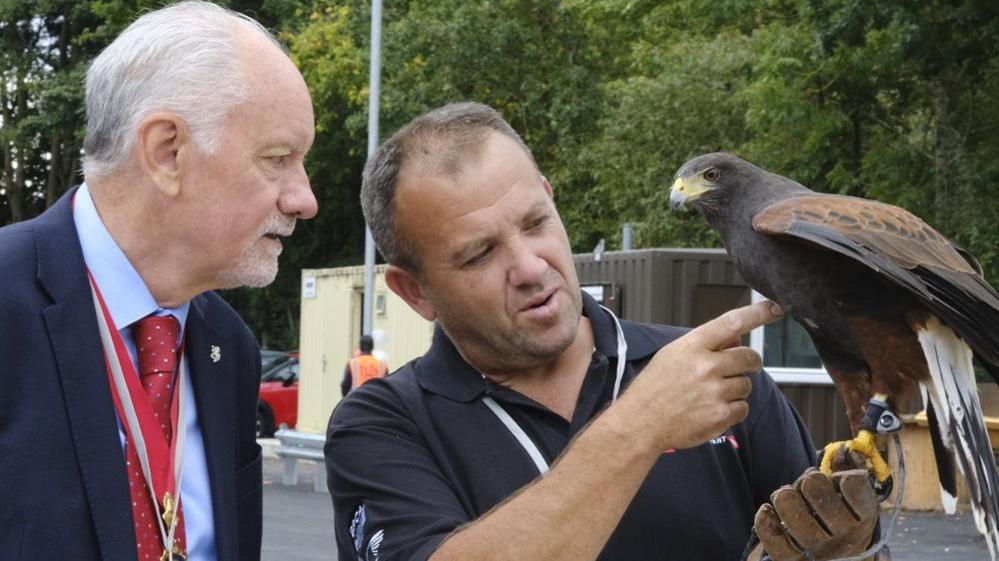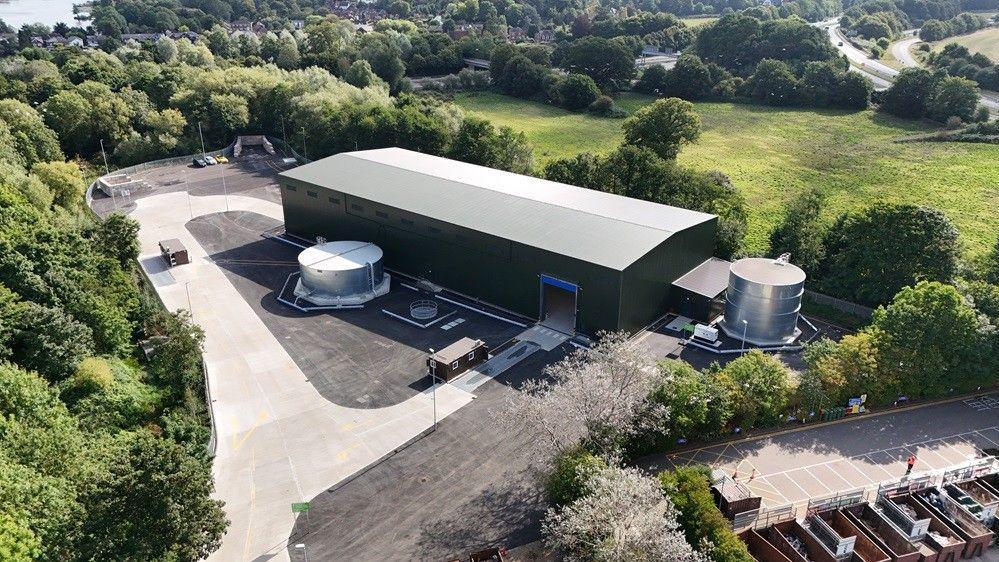Hawk used to protect new waste transfer station

Willow, a Harris hawk, will be used to protect the station from seagulls
- Published
A hawk is to be used to protect a new state-of-the-art waste transfer station in Kent.
The Sevenoaks Waste Transfer Station is where bin lorries take their contents to be sorted into recycled items and those for incineration.
The new station, run by Kent County Council (KCC), can take up to 75,000 tonnes – nearly double the 40,000-tonne capacity of the previous site.
Willow, a Harris hawk, will be used to protect the station from unwanted birds, primarily seagulls.
“Wherever you find a good food source, you will find the seagulls,” falconer Dave Mewburn said.
“Willow won’t harm them. She just flies around, which frightens them away to stop them making a mess everywhere. It is an environmentally-friendly way of controlling the issue.”

The new station, run by Kent County Council (KCC), can take up to 75,000 tonnes
When waste is collected at the kerbside, it is taken to a station where it is deposited, bulked and then taken to be processed or disposed of, the council said.
Councillor Rob Thomas, cabinet member for environment, said the previous site had “come to the end of its useful life”.
“There is also forecasted growth of houses in the Sevenoaks area, as well as government regulation requiring us to collect food waste,” he told BBC Radio Kent.
“As part of the future-proofing of that service, this facility will help us to bundle up and process that waste well into the future.”
He added: “This is where residents’ council tax money is going, to help ensure their waste is processed and recycled, wherever possible.”
Follow BBC Kent on Facebook, external, on X, external, and on Instagram, external. Send your story ideas to southeasttoday@bbc.co.uk , external or WhatsApp us on 08081 002250.